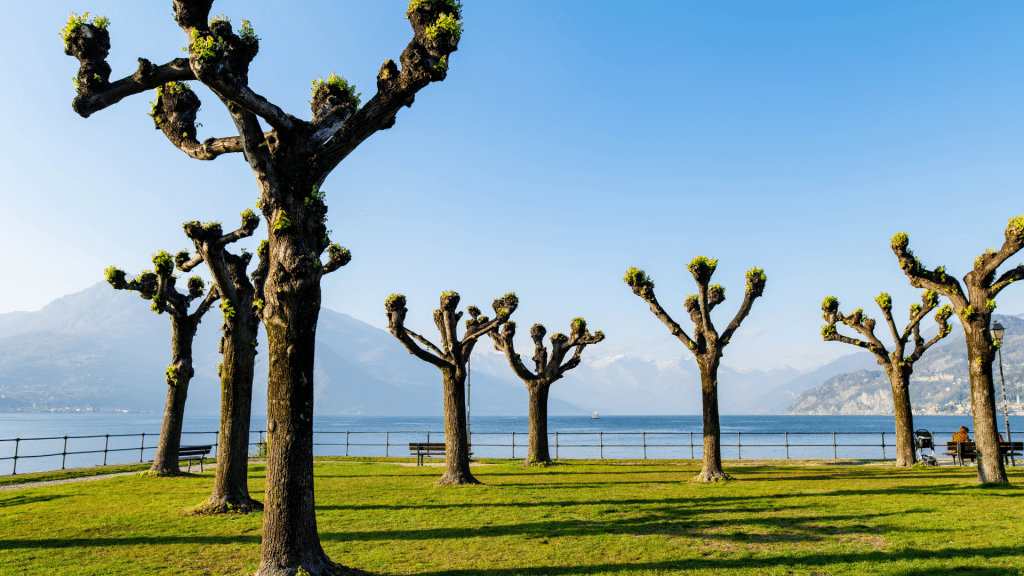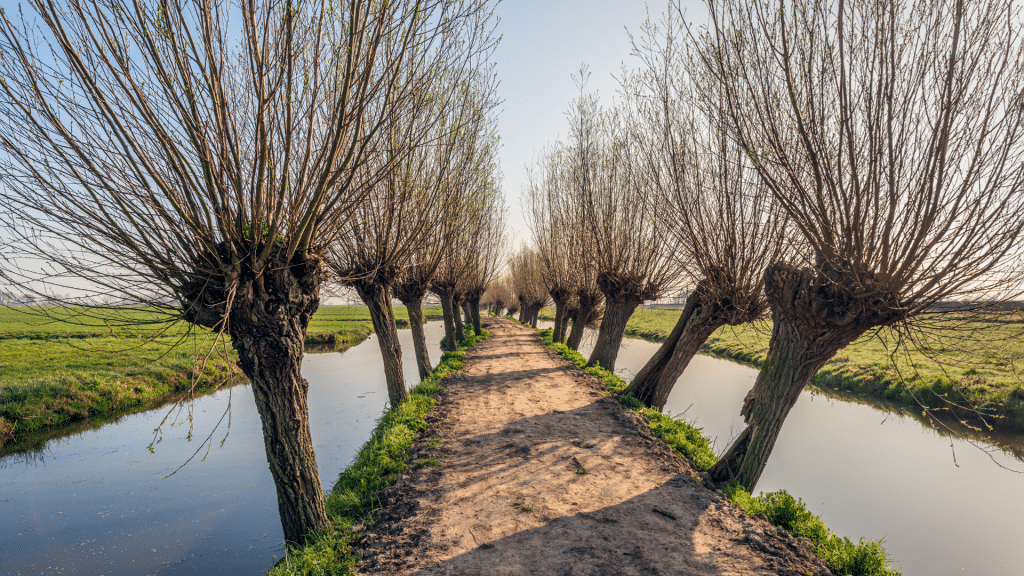
Tree Pollarding – What is it?
Pruning is a technique used to encourage new growth in younger trees with the removal of dense foliage. Tree Pollarding is a pruning system that cuts back tree branches to the trunk so that it forms a head of bare branches. Pollarding is done to restrict trees from growing big in small spaces and it encourages the production of new, more colourful, healthier leaves. It trains the tree and is typically a technique used on younger trees so they can be tamed. The new growth emerges in a controlled manner, giving the tree a unique appearance characterized by a dense head of branches.
When To Pollard Trees
You can pollard smaller trees in your garden but they should be done a certain time of year to promote the new growth and avoid cases of fungal interference.
Tree pollarding should be done annually when they’re dormant which is later winter or early spring. When you plant a single-stem tree, you can trim it once it’s reached the preferred height for your garden. You want to take the main branches that shape the tree and cut them back almost to the trunk, just beyond a node or a bud. Be careful to cut them clean and not tear the bark as this can wound the tree and open it up to diseases.
When your tree starts to shoot again, snap off any shoots that grow below the pollarded trunks. Use sharp secateurs or loppers for your pruning and for thicker branches, pruning saws. If you don’t have the right equipment or you have many branches to remove from your garden trees, call the Tree Doctors for professional assistance.

The Benefits of Tree Pollarding
Another benefit of tree pollarding is opening up the space for light to reach foliage and growth underneath so it can encourage underbrush growth in woodland areas or large gardens with lots of plant life. Tree pollarding is commonly seen in cities and urban areas where trees could disturb cable lines or hinder neighbours’ properties. It’s a great way to effectively rejuvenate a tree and elongate its lifespan and although it may need doing every year or two, it’s low maintenance in the long run.
Tree pollarding is a historic and culturally significant practice used for centuries. The branches that get removed in commercial or woodland areas for pollarding are used as firewood which is historically a reason for this practice. Tree pollarding was preferred in wood pastures or grazing areas due to animals eating the new growth. Some of the wood was used as materials for building things like fences and baskets from smaller branches or certain species.
While the initial appearance of a pollarded tree may seem drastic, the subsequent regrowth creates a visually appealing and unique shape. It will grow to be fuller, brighter and healthier looking. Managing the size of a tree is the primary benefit of tree pollarding; many trees growing in urban areas will be confined to pavement space or small gardens so will need pruning. It’s also a safety measure for overgrown trees with heavy branches that could affect its surroundings if a storm were to take it down.
Find a Proffessional
With the right techniques and careful considerations, pollarding can transform trees into stunning features while promoting their longevity and well-being. Before embarking on a pollarding journey, consulting a professional arborist is a wise step to ensure the best outcomes for both the tree and its surrounding environment.
Get In Touch
The Tree Doctors can assist you with tree pollarding and maintaining your garden trees. Give us a call for a free quote and we’ll send our team to complete the process. We are trained and experienced in all arborist services and techniques. We have all the right equipment to provide tree pollarding, which for urban gardens and areas, locals might not have access to. Our services cover the West Midlands, and we work across residential and commercial sites. Contact us today for healthier-looking trees!
